World of
authentic Rugs
Contact him for consultation
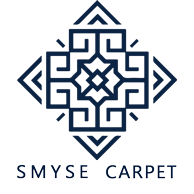
A rug is the only piece of art you are allowed to eat, sleep and step on. It takes up the largest portion of your floor and a rug is a little mysterious. For example, how was the rug weaved? What is the difference between knotted, loomed and tufted? In this article, we peel back the mystery and focus on the major types of rugs and weaving techniques used to make them.
Before we being, we need to review a little rug terminology. (We have covered Knot Type and Knot Density in details at this link)
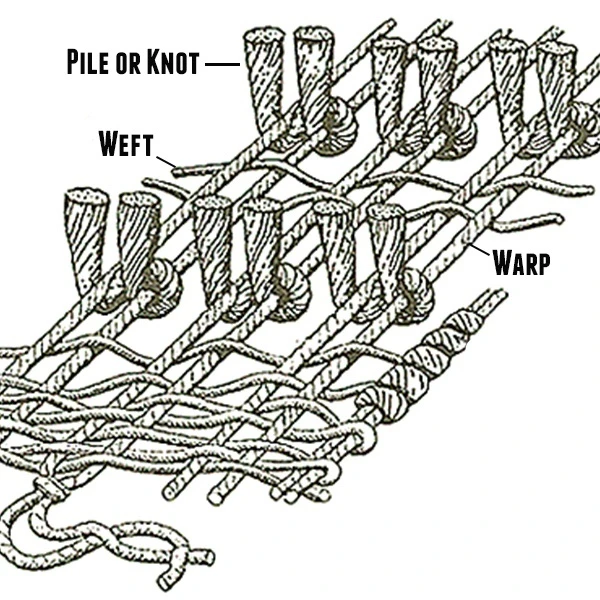
Hand-knotting is an ancient art used to make rugs that are masterpieces of intricate designs. A hand-knotted rug is a one-of-a-kind rug that is woven completely by hand on a special loom. Traditionally, hand-knotted rugs are made with a specially designed loom. Vertical threads are tied onto the loom and eventually become the fringe of the rug. Horizontal threads intertwine to create a foundation. Knots are tied to the vertical threads, and then cut and tied again to secure each knot. Popular types of hand-knotted rugs include Oriental and Persian rugs. These rugs are made from natural materials, such as wool, silk, and cotton. They have a flatter pile with less texture. These are your traditional Persian rugs. A knot is created using the following steps.
That creates one knot and it can now be cut. This is a little complicated but the photo below will help.
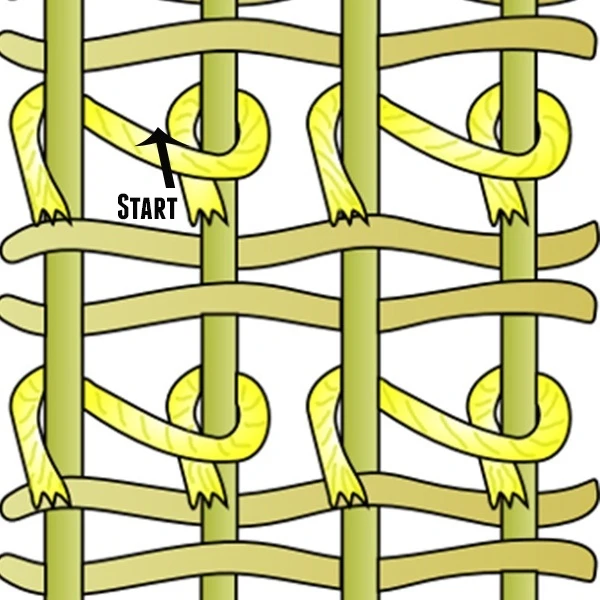
Weaving a hand-knotted rug requires a great deal of skill and often a lot of time to produce. The quality and very often the cost of a hand-knotted rug is determined by the number of knots per square inch. In this case, a higher density means better quality.
A complex pattern can require very dense knotting, and thus it can take a long time to produce. It can often take months to complete a hand-knotted rug. An average weaver can tie about 10,000 knots per day. So you can imagine how long it can take to complete one rug, especially if it happens to be a large one. The time involved in making it also accounts for hand-knotted rugs costing more on average than hand-tufted rugs.
If you want to bring a sense of timeless style to your home, you can’t do much better than a hand-knotted rug. Hand-knotted rugs are carefully and individually crafted by the hands of skilled rug makers using techniques that have been passed down for hundreds of years. A hand-knotted rug will bring an inspired, dignified feeling into your home, breathing life into any room.
Every hand-knotted rug has a touch of sacredness to it because each hand-knotted rug is made by a skilled weaver who spends months tying every single knot to form beautiful patterns. These rugs are not only sacred because of the care that goes into each one but because of the time needed to make them. Hand-knotted rugs can take anywhere from 30 days to 8 years to complete. If you want to bring something really special and one-of-a-kind into your home, a hand-knotted rug is a perfect choice.
That’s the thing with handmade items. They still have the person’s mark on them, and when you hold them, you feel less alone.
Aimee Bender, The Color Master: Stories
One of the easiest ways to spot a hand-knotted rug is to flip it over. A hand-knotted rug will not have a backing on it. The design is the same on both sides. It will look like you could turn it over and use it on either side thanks to the exquisite amount of detail from the knotting. A hand-knotted rug will likely have fringe because there is no binding on the ends of the carpet.
One 8×10 rug can have anywhere between 1 to 6 million knots or 100 to 800 knots per square inch. The average time to make an 8×10 hand knotted rug is over 3000 hours for one person. That is equivalent to 384 working days.
Most hand-knotted rugs are made with natural fibers like silk or wool. Hand-knotted rugs from silk are typically more expensive and highly sought after because of their luxurious texture, but the most common material used in hand-knotted rugs in wool.
Wool is hypoallergenic, anti-bacterial, and a renewable source of material. Most hand-knotted rugs are made with sheep’s wool but varieties can be found with wool from goats or alpacas. Hand-knotted rugs are also commonly made with multiple kinds of material. A mixture of wool and silk is very popular in hand-knotted rugs. A rug made out of these two materials is predominately woven with wool while the silk is woven in periodically to add a luxurious touch to the final product.
Because hand-knotted rugs are made with wool and silk, they are very durable, soft, and stain resistant. Even modern designs can become family heirlooms when hand-knotted.
These are done on a loom and the process takes 1-4 people depending on the size of the rug. On the loom, the yarn or weft is thrown through the middle of the bottom and top warp.
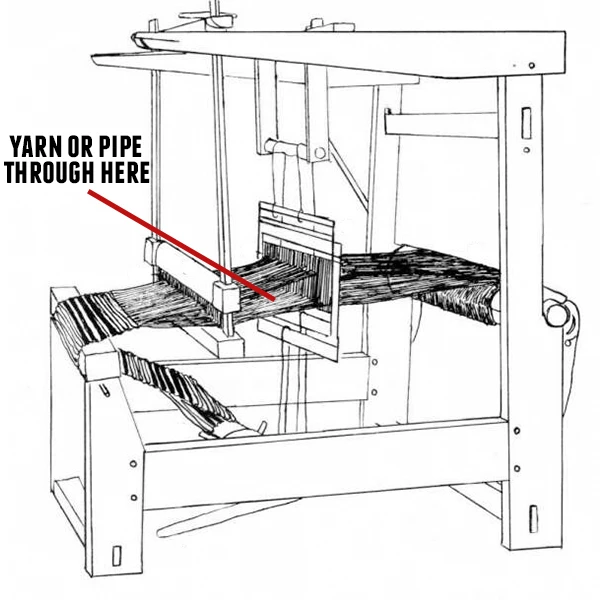
A pile is the difference between a flatweave and a loomed rug. To make the pile, the weaver uses the same technique as discussed above but, instead of yarn, the weaver places a rod or pipe through the middle of the warp. This lifts the yarn and creates a pile. The weaver will use both techniques (yarn and pipe) interchangeably throughout the rug. To finish, the loops created by the pipe are either left or cut to have a fuller finish.
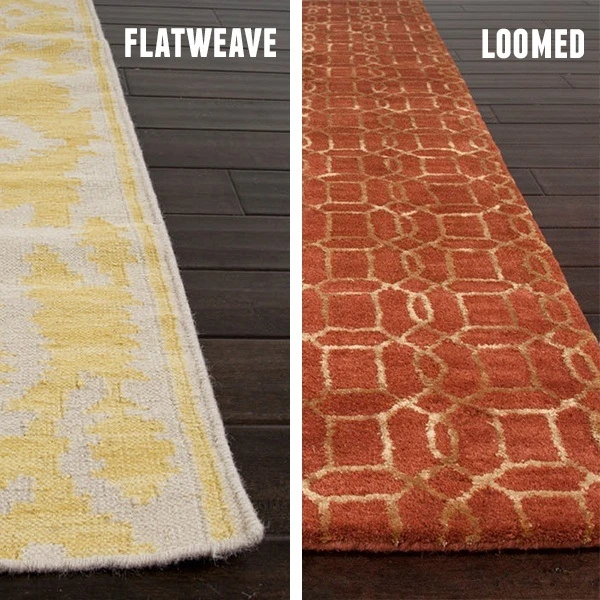
A hand-tufted rug is made partially by hand and partially by a mechanized tool. This type of rug is made of wool. The process for creating a hand-tufted rug differs greatly from a hand-knotted rug. A hand-tufted rug is made by punching strands of wool into a canvas that is stretched on a frame with the help of a hand-operated tool. This process is not very time-intensive and does not require the same level of skill that hand-knotting does.
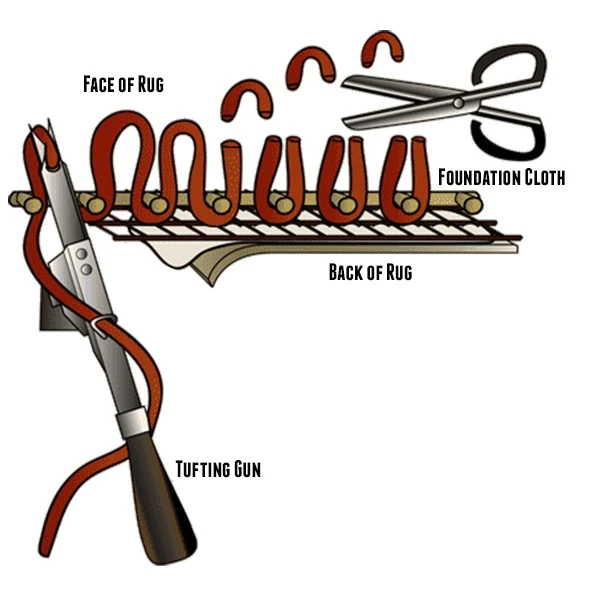
After piling with wool, the rug is removed from the frame. A hand-tufted rug will have some sort of a backing to hold the tufts in place. Often a scrim fabric is glued to the back. To complete the rug, a fringe is added by either sewing or gluing it on.
Tufted rugs are similar to loomed rugs but built in different ways. Instead of starting with a warp and making the weft using the loom, a tufted rug starts with a foundation cloth. The foundation cloth is pre-woven fabric with small squares.
The foundation cloth is then hung and stretched tight. A tufting gun punches strands of fiber into a canvas backing and then held in place with an adhesive. The canvas is imprinted with the design of the rug so that the fiber can follow the specific design and trace the stencil as the strands of fiber are punched. The yarn is shot (from the tufting gun) through the back of the rug to the front. The yarn is then cut or shaved and the pile is created.
By using a foundation cloth, you do not have to adhere to the normal rug building structure of row by row. The design can be made sporadically and enables the weaver to make more precise designs. Instead of building a mosaic from the bottom up, you can make individual pieces one at a time.
Hand hooked rugs are also made on a foundation cloth and a rug hook tool is used.
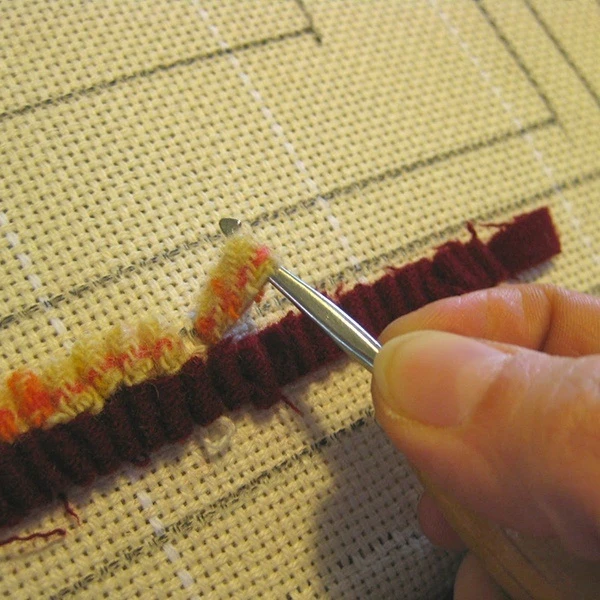
Besides a loomed flatweave, which was discussed under the Hand Loomed section above, a flatweave can also be made with knots. Flat weave rugs are a category of rug that essentially refers to their thinness and lack of height.
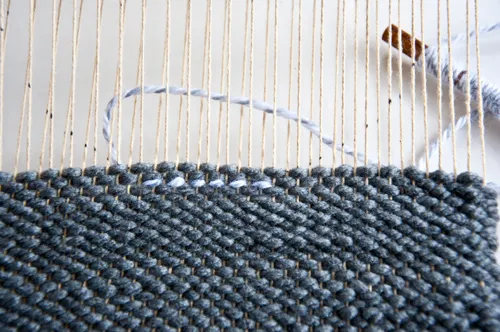
Hand knotted flatweaves are made very similar to hand knotted Persian rugs. The weaver uses the Persian knot but instead of the yarn being cut after the second loop, the same knot is continued. This technique is commonly used interchangeable with a regular Persian knot and is almost never used, by itself to make a rug.
Flat weave rugs can also be created through different styles of braiding or weaving. The most important thing to know with this style of area rug is that they lay extremely flat with no bunching or pile. It is suggested to use a rug pad underneath thinner rugs, whether they are made of wool, silk, or any other type of material, to help it stay in place and provide added cushion.
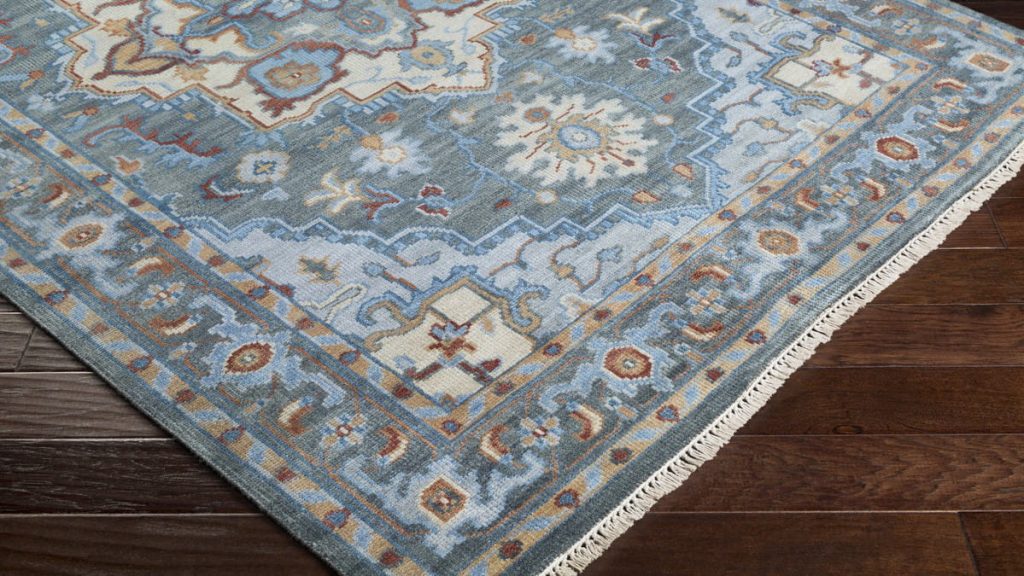
Programmed rugs use the exact same techniques as discussed above but made using a machine. Programmed rugs can only be made using loomed, tufted, hooked and flatweave techniques. Hand knotted rugs cannot be replicated using a machine.
The vast majority of hand-knotted rugs are not made with synthetic materials like polypropylene, nylon, acrylic, or polyester.
Programmed rugs have done well over the past few years because of the ability to mass produce rugs of different sizes. As mentioned, it takes 384 working days to create one 8×10 hand knotted rug. A machine can create several loomed or tufted 8×10 rugs in one day. Some machine-made rugs are comparable in quality to their handmade counterpart, but at some point, nothing can beat the quality of a true handmade rug.
Some customers believe they have a “hand-made” (hand-knotted) area rug because that’s what the salesman told them when the sad reality is they overspent on a machine made rug. The difference in price between an 8X10 hand-knotted area rug and an 8X10 machine made one could be thousands of dollars difference. By explaining you the difference between hand-knotted and machine made rugs, you potentially save thousands of dollars when purchasing your new rug.
A hand-knotted rug can be recognized by a three-part test. First, the fringe must be a physical part of the rug. It cannot be sewed on, glued on, or tacked on.
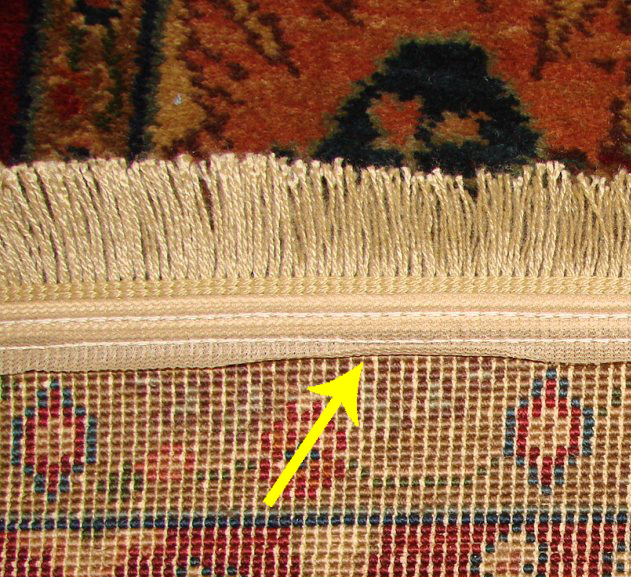
This fringe is an extension of the warp/weft and is the foundation upon which the rug is knotted. Think of the fringe as the “skeleton” of the rug.
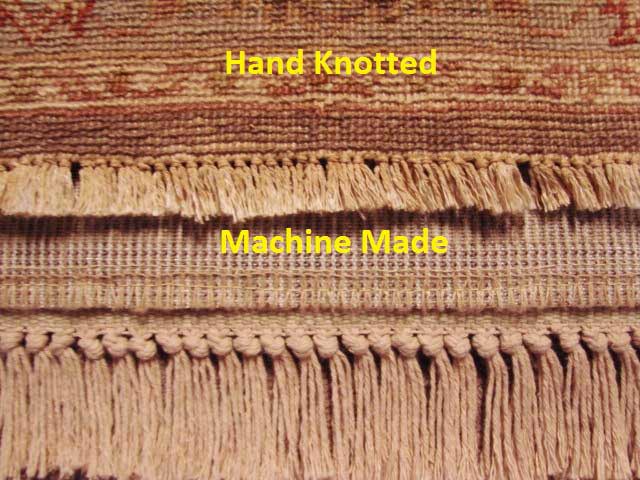
Second, you must be able to see the knots on the back or the underside of the rug. If you cannot see the pattern and the bare knots, there is a problem. If the back of the rug is covered by anything such as a canvas or cotton backing, rubber, anything… consider this part of the test failed for a hand-knotted rug.
If the weaving and the knots are not perfectly uniform, you know it is a handmade rug. In addition, you can actually distinguish the individual knots when you look at the back of the rug. This is because, in making handmade rugs, weavers manually insert the knots into the foundation of the rug and tie each knot by hand. Not surprisingly, because it is a fully manual process, this results in the unevenness that you can see on the underside of the rug.
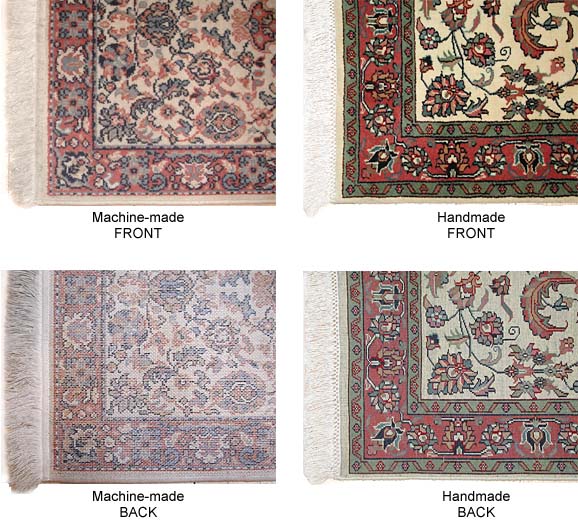
Machine made rugs, on the other hand, are manufactured by large, heavy-duty power looms and because the process is entirely automated the resultant rug will have a smooth and even underside. In a machine made rug, the back of the rug will typically be very uniform and perfectly even. You cannot see individual knots at the back of a machine made rug because there aren’t any. The pile is held together by an over-stitch construction and this smooth over stitch pattern is what you can see on the entire back of a machine made rug.
Third, and this one is a little tricky, fold back an edge of the rug to expose the base of the pile. You should be able to see tiny little knot-heads at the base of every fiber. If you do not see these knots-heads, but just find the fibers coming through a screen, this is definitely not a hand-knotted rug.
On a machine made rug, if you look closely, you will find that the fringe is either sewn or glued on or both. The back of the rugs will show the pattern and will even look like knots, but when you perform part three of the test you will not find knots at the base of the fiber. You will only find that the fibers are injected through a screen or hooked around a base string and pressed together with other strings.
In authentic Persian rugs, the fringe is part of the body of the rug itself. It is formed during the weaving process and looks like an extension of the rug body. In machine made rugs, the fringe is not created during the manufacturing process. It is in fact rather sewn onto the rug after the rug is completed. Take a closer look at the part where the fringe is attached to the body of the rug. If you can see that is has been sewn to the rug then you know the rug is not genuine.
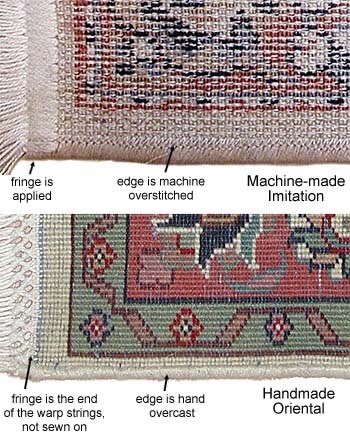
Tufted rugs are easier to recognize. They usually have a full, thick pile, and will have a canvas backing. They may or may not have fringe. The fringe is exclusively for styling with this type of rug, and is not a part of the foundation. Hand-tufted rugs take a fraction of the time to produce and, as a result, are much more affordable than hand-knotted rugs. Hand-knotted rugs are ultimately higher in quality, but both are very durable and can be placed in high traffic areas.
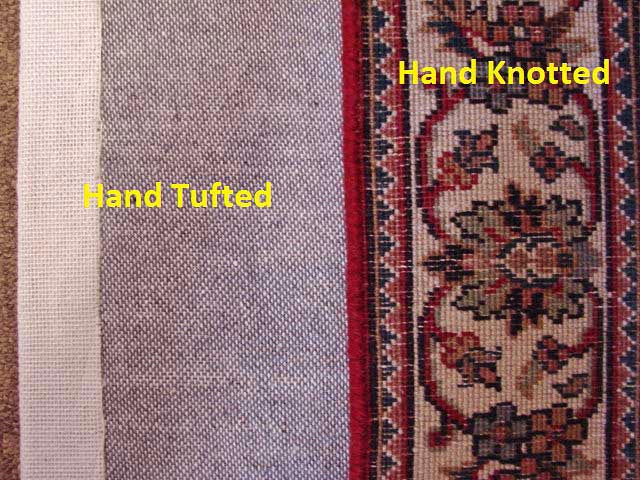
Even though both hand-knotted and hand-tufted rugs are made by hand, that is where the similarity ends. The process of creating both types of rugs is different not just in complexity, but also the time it takes to create one, and the skill level required in manufacturing it. As a result of an entirely different process, the products end up having a different look and feel. For these reasons, these different types of rugs can also differ in longevity and cost. Before making a purchase, learn the key differences between the rugs.
Hand-knotted rugs have superior value because they are original, not mass-produced. The high quality of the knots makes a hand-knotted rug outlast a hand-tufted one. The tufts of a hand-tufted rug tend to loosen up and come out over time. A hand-knotted rug can become a family heirloom and last for generations if it is used with care. A hand-tufted rug will not last as long in the same level of condition.
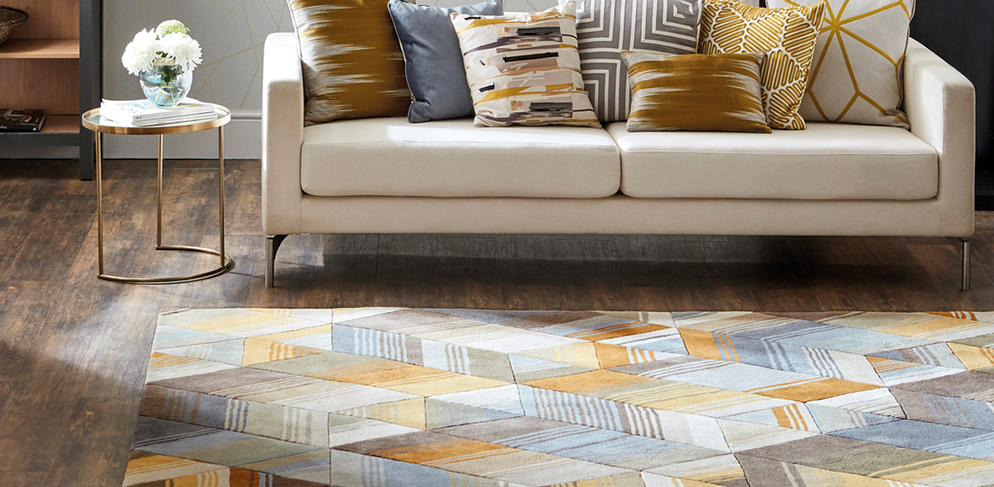
If you want to buy a rug that has value beyond its use in your home decor today, look to well-made rug hand-knotted by expert artisans. A good-quality hand-knotted rug can become a collector’s item, but this doesn’t hold true for just any hand-knotted rug. There is a whole range of hand-knotted ones, from poorly made examples to exquisite ones. For example, some countries use poor-quality or highly processed wool for hand-knotted rugs. Other hand-knotted rugs may be handmade using a Jufti knot, also known as a false knot. This false knot is a way to cut corners and time from making the rug and it also lowers the quality of the carpet. It pays to learn about Persian and Turkish knots that are used to make the highest quality hand-knotted rugs.
However, if you prefer to spend less, opt for a hand-tufted rug. A hand-tufted rug costs less than a hand-knotted rug because it usually takes less time and skill to make and is thus less costly to produce. This lets the manufacturer pass those savings on to you.
Hand-tufted rugs never quite achieve heirloom status because they are not one of a kind. The knots on a hand-knotted rug are very tight and can last for centuries, but those on a hand-tufted rug can start to fray over time.